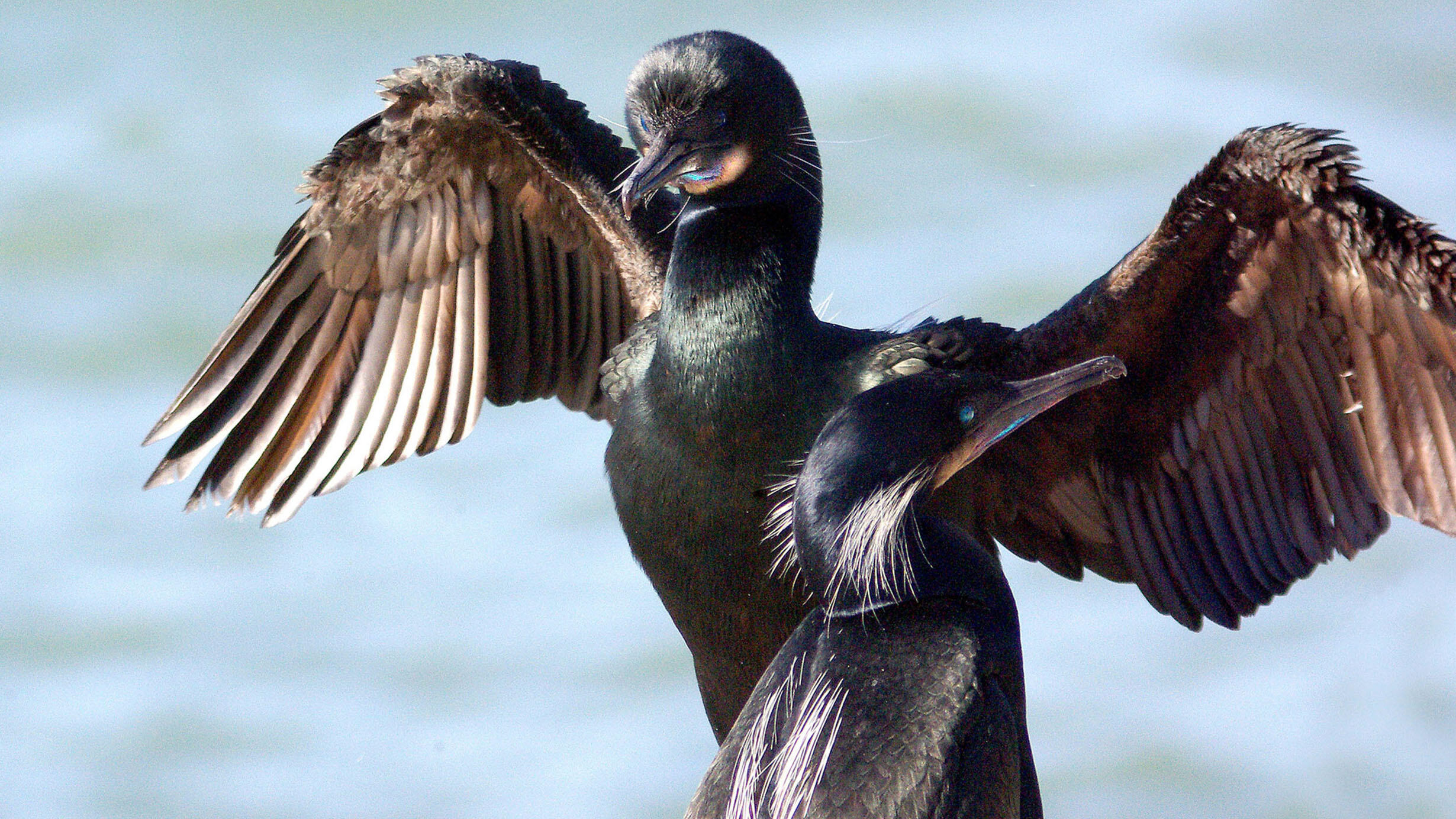 Birds who are closely related to flightless species, such as Brandt’s Cormorant (Phalacrocorax penicillatus) and the Flightless Cormorant (Phalacrocorax harrisi), have similar but slightly varied brain shapes based on their evolutionary history.
Birds who are closely related to flightless species, such as Brandt’s Cormorant (Phalacrocorax penicillatus) and the Flightless Cormorant (Phalacrocorax harrisi), have similar but slightly varied brain shapes based on their evolutionary history.Alan Schmierer/Flickr
Theropod dinosaurs, such as Velociraptor and T. rex that are most closely related to modern birds, underwent a well-documented evolutionary transition from being land-dwelling to capable of flight.
But researchers know little about how these animals’ brains changed during this critical period. Now, a new study led by Museum research associates changes that, finding that while brain shape is likely affected by the acquisition of flight, it is not impacted by the loss of it.
Eugenia Gold, assistant professor of biology at Suffolk University, and Akinobu Watanabe, an assistant professor at the New York Institute of Technology College of Osteopathic Medicine—both of whom received Ph.D.-degrees in comparative biology through the Museum’s Richard Gilder Graduate School—compared the brain shapes of modern-day birds to those of non-avian dinosaurs that were most likely on the verge of becoming airborne. They paid particular attention to closely related pairs of modern birds where one species is flightless and the other is volant, or able to fly.
"Size is only one aspect of how the brain changed throughout evolutionary time."
“We used the loss of flight as a reverse analogue to the initial acquisition of flight,” said Gold.
The scientists examined CT scan data from the skulls of about 80 specimens. They filled in the braincases digitally to create 3D representations of the brains called endocasts. Then, using geometric morphometrics, a technique that involves putting 3D coordinate points to mathematically describe shape, and a series of statistical methods, they analyzed how the shape of the endocasts changed from dinosaurs to birds, as well as from flying birds to related flightless birds.
Silhouettes by L. Shymal, T. Holtz/E. Gold, E. Willoughby; Citipati endocast by A. Balanoff
“So far, most studies on brain evolution have analyzed size, but size is only one aspect of how the brain changed throughout evolutionary time. In this study, we used a high-density geometric morphometric approach to capture the full breadth of shape differences and changes that occurred in dinosaurs and modern birds,” said Watanabe.
They found that in modern birds, the shape of the brain is very similar in closely related species. The loss of flight does not change the shape of the brain in large ways; the shape is primarily controlled by evolutionary history. However, they also found that there was an expansion of the cerebrum along the theropod lineage, suggesting that the initial acquisition of flight may have had an effect on brain shape.
The study also added new evidence to the scientific argument over whether or not Archaeopteryx could fly. They inferred that the feathered dinosaur, a transitional species between dinosaurs and modern birds, was terrestrial based on its endocranial shape.
“Maybe it could flap its wings to run up vertical surfaces,” said Gold.
The research is published in the journal BMC Evolutionary Biology.